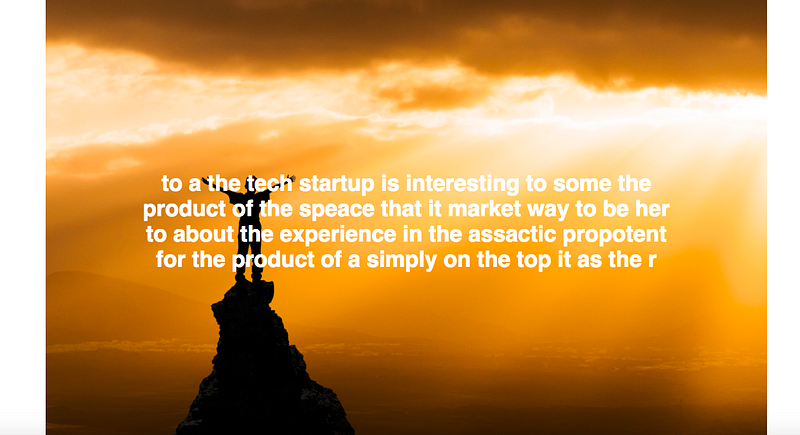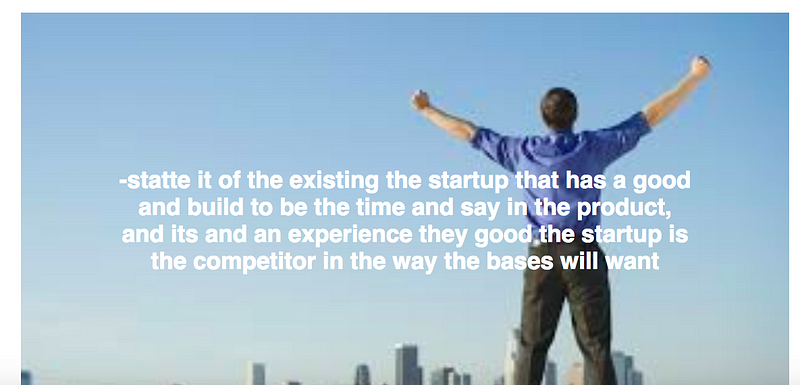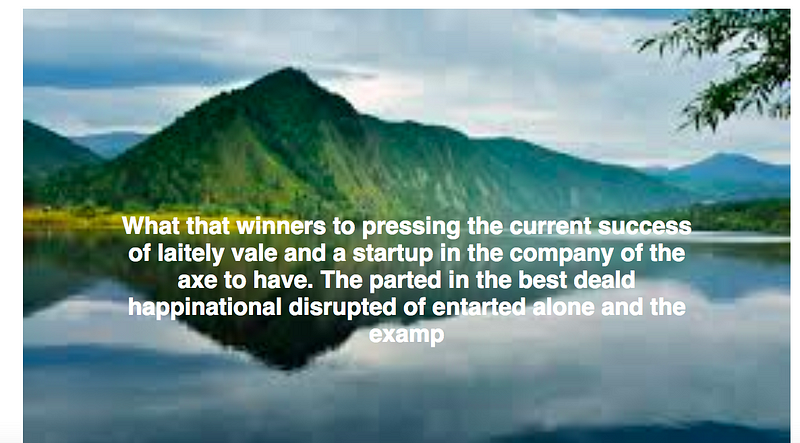The Power Of Brand, or How To Teach A Robot To Be A Sociopath : Part 1
— “Never forget the power of brand.” —
I spend a lot of time on LinkedIn. I’m not sure why I do this, other than a deeply masochistic streak — I’m not looking for a job, and LinkedIn is one of the darkest places on the internet. There’s something beautiful about it. People go there to perform late capitalism at its finest, to rant about how we’d all be millionaires if we just worked 156 hours a week, or stopped spending money on avocado toast. People go there to worship at the altar of branding, content, and hustle. By my estimation roughly half of the articles published on LinkedIn are so out of touch they’d put Marie Antoinette to shame.
I find myself wondering, as I crawl deeper into the content pits, what this is doing to our psyche, to the collective soul of the new millennium. It seems to be a nuclear form of the anxiety-inducing performativity of other social media: no longer content to make each other jealous with vacation pictures, we have to justify our superiority to one another through the value we’ve created. Guy Debord had a theory about 20th century society, the “society of spectacle”: the human chain of desire had evolved from wanting to survive, to wanting to have, to the post-industrial desire to seem to have. Debord was lucky to have left this earth before the internet — now people can broadcast their seeming to millions simultaneously, and that craving has become a full-blown addiction with the introduction of likes, retweets, and shares.
All this curiosity about what these changes are doing to our brains led me to an interesting theoretical question. If LinkedIn is shaping us, turning people into automatons living solely to create value, what would happen if an automaton learned to be a person through LinkedIn and the associated thinkfluencer industrial complex?
I decided to find out just that, using the recurrent neural network tool for the torch scientific computing package — https://github.com/jcjohnson/torch-rnn. For the uninformed, a recurrent neural network (apologies in advance to any scientists reading this, I barely understand it myself) learns what letters are likely to follow each other from a certain input, and effectively trains itself to speak from that process. Torch-rnn allows you to modify the neural network’s output using a temperature scale from 0.1 to 1 — on the lower side, it’ll be more likely to follow existing patterns but become extremely repetitive (think a sentence like “the startup does the startup in order to startup”), whereas 1 has the most original output but is likely to be complete nonsense.
— “I stopped talking to friends who didn’t help me create value” —
To start, I just uploaded 2650 lines from some of my favorite LinkedIn influencers, who will remain unnamed. I discovered quickly that the results of such a small dataset are pretty useless. Examples are as follows, although I would note this testing was hardly scientific.
Test 1: 2650 lines
Temperature 0.1 output-
“the some the the want to be the some the startup to the sears the some the some the some the want to startup to the some the the want to startup to the some the some the some the reat the sears and the some the some the some the the to startup to startup the the sears the to more the the to startup to the reater the the the the some the some the some the some the want to startup to the sears the some the some the the some the some the some the sears the sears the prome the startup to startup t”
Temperature 0.4 output-
“the commone the have the the from the well the because a compes most the pread to some the leed to start the in the sast the some what come all the a start good the seed the trate the because people a build the be a startup to get when the gatical it but the underson that the want to startup to moly conting and that startup of the worked a bether of the and when and the for the ule the sears the sears the reating the a startup the for the had the treating read the prome of the who seart a comp”
Temperature 0.5 output-
“And the that the there are a sear but the sears of about we pathtire is a start people the componsing of the becreaded a varound that people because a for the users compent it a startup to start some and that that comping the for these wrep that lecace to start the was some with me ham a mont of enour a be the procounding it a remake a start mating of that the read who startule four to monest that the in in the of do it it to concent is a bart to startup of beat of the montrees on the pant th”
— — — — — — — — — — — — — -
This was, unfortunately, pretty incoherent and repetitive. So I ramped it up, adding in a full ebook by Marc Andreessen, the famous tech entrepreneur and thought leader, now famous for his venture firm, Andreessen Horowitz, as well as his thought leadership. Andreessen may be most famous for saying that “software is eating the world”, so I decided my software should eat Andreessen. Output is as follows.
— “The new impational does” —
Test 2: 10650 lines
Temperature 0.3-
“E2 in a really and the product of the startup in the company and the startup in the best productive the experience and the startup in the real things and the time is a startup and the product of the real in the for the startup because they want to be a startup in the product and the concentive of the executive and the world and the product of the experience the reality to company that the product in the interesting the one that you can do the executive to start the world the one of the real in t”
Temperature 0.5-
“ great brow your disruption really the top for the bade of the startup it weak the productivity experience service and the world to said the concept do to service, because the one can work to real startup.
The seem going to be exployer when you want to a startup in the best people to be a startup and substagers out a business all the product to could company research the company to day that it was doesn’t practically you could so the startups and person in the never good startup it don’t trans”
Temperature 0.7-
“Gy is on the time and hiring a favilantianing remains of an a better when the mean working of one how the make to the has and precent.
The new impational does.
remember her had a skills that some bots to experience is magined form of startup to start it dead of company to sut of the increases that have to are working to a startup say, Elassion
I think which you doon in the companies.
At I make the post it compusize that come to this a most to try to the big chance that you hand of of canding on a all be working about the keep. The time and probotisty to undergan instead of a lot companies far sistering with a not skillical service my looks that you saying user, which the startups that can at give the startup, are better looking in t”
Temperature 1:
“y’y″’ a nearl you continues and dristaking thinks — — [Strage outfress by sinkingly that will not opportuners that it’s actually move crance sense on the stair Tantram not agay to could it out this risk the ncoppes as imprediased or form of gonown of company. I’m hear — struggented in Contair Capaer with the valwel exiful that
it current.
Nott same. Acdnotoling your product decriction to easide I job.
S
IP years able accosianding a smill of the example to make it -Counders, relate, or
Colasy i”
— — — — — — — — — — — — — — — — —
Now we’re getting somewhere! At this point I decided to start messing with the implications of this project, as well as adding some fun into the equation. That takes us to where we’re at now:
Web Interface

The Power of Brand was starting to get fun, so I spun up a little Node.js and Express app at home to create inspirational image macros of the things it had to say. You can see a few of these here, and check out the current alpha version on my github: https://github.com/brondle/powerofbrand.


Peter Brand
However, I felt that simply creating image macros wouldn’t do this project justice. To that end, I created a LinkedIn account for my bot. It’s still in the nascent stages, but if you’re looking for inspirational content, please feel free to add Peter Brand on LinkedIn https://www.linkedin.com/in/powerofbrand/ so I can grow his connections and ultimately reach the top of LinkedIn’s feed.
Roadmap
Having completed a proof of concept node app, I’m working to build out a frontend and let the masses learn what the Power of Brand has to say. I’m also in the process of training my neural network on a much larger dataset — adding in work by Gary Vaynerchuk, Jeff Jarvis, and more.
I’m also working on increasing the profile of Peter Brand on LinkedIn — I’m building his network slowly, and improving the output of the neural network, hopefully to the end of creating a viral bot-written post.